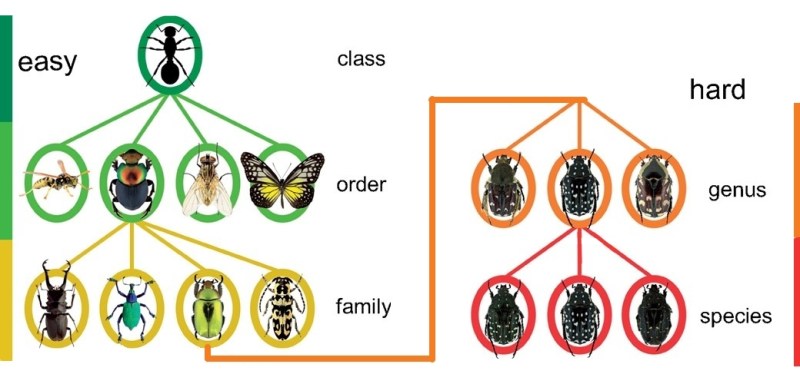
There are about one million known species of insects – more than for any other group of living organisms. If you need to determine which species an insect belongs to, things get complicated quick. In fact, for distinguishing between certain kinds of species, you might need a well-trained expert in that species, and experts’ time is often better spent on something else. This is where CNNs (convolutional neural networks) come in nowadays, and this paper describes a CNN doing just as well if not better than human experts.
There are two particularly challenging tasks in insect taxonomy – dealing with visually similar species that are hard for non-experts to tell apart, and reliably determining which family an insect belongs to from just its pictures. The paper describes quite well how the CNN technologies they’re using work, and how they narrowed their technology choice down to the method of feature transfer. Feature transfer uses a general-purpose image recognition network, and builds upon that to form a more application-tailored machine learning system – saving computational power, reducing the amount of training data required, and largely avoiding problems like overfitting.
The resulting network has outplayed both experts and more traditional automated recognition methods, and is promising when it comes to acceleration of scientific discovery. We encourage you check this paper out – the research story is coherent, and the paper provides good insights into abilities and limitations of CNNs, save for heavy terminology here and there. (The webpage view of the paper has mangled characters, but the PDF download doesn’t have such problems.) We’re seeing neural networks be used more and more for pattern recognition tasks everywhere, and while the results aren’t as miraculous as some say, hackers like us have used a CNN in teaching a dog to stop barking when the owner’s not home, and a research team has developed a toolkit enabling anyone to recognize birds from their songs.
We thank [Anonymous] for sharing this with us!
0 Commentaires